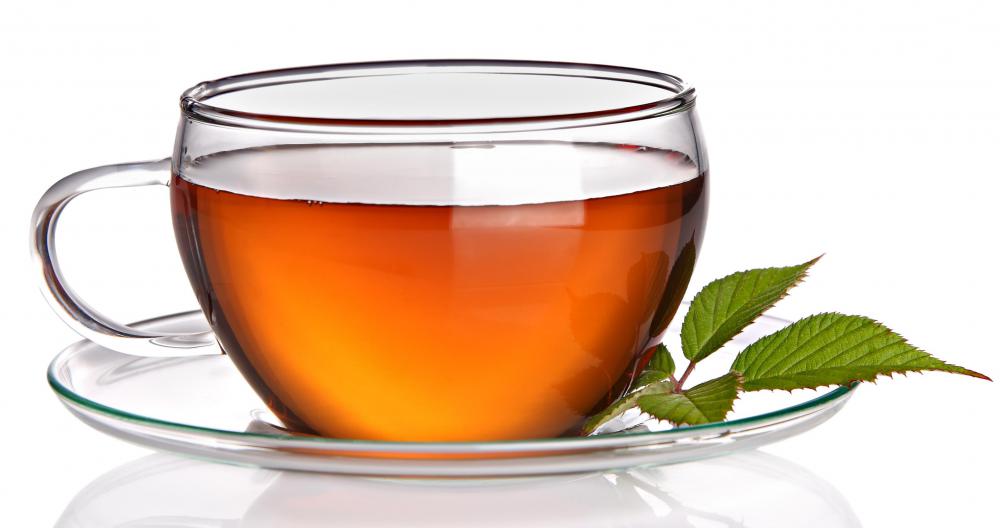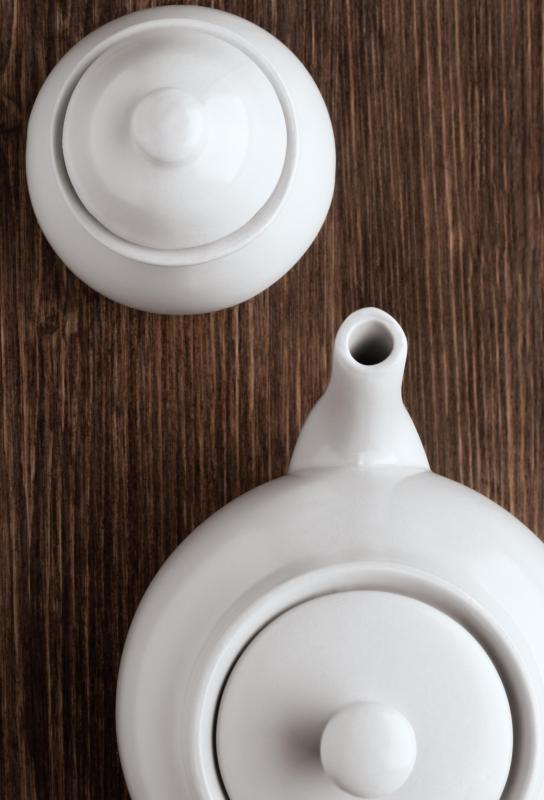At DelightedCooking, we're committed to delivering accurate, trustworthy information. Our expert-authored content is rigorously fact-checked and sourced from credible authorities. Discover how we uphold the highest standards in providing you with reliable knowledge.
What Is Long Leaf Tea?
Long leaf tea is sometimes called pure or whole leaf tea, because it consists of the whole leaves of the Camellia sinensis plant, carefully handled to prevent breakage during processing and brewing. Tea aficionados argue that long leaf tea is the best type to drink, because it has the best flavor, with minimal tannins and other bitter flavors. Long leaf tea can be purchased loose in bags or bulk form, or in specially designed tea bags that are made to accommodate the large and brittle tea leaves.
This kind of tea tends to be more expensive than conventional teas, because its delicacy requires more protection throughout the packaging and delivery process. The tea can come in a variety of forms, including white tea, which is exposed to minimal oxidation by being protected during the growth process and dried immediately, brewing a delicate and complexly flavored cup that can easily be overwhelmed by the addition of sugar and milk. This tea can also be slightly fermented, resulting in green tea, which is generally steamed and dried within two days of picking. Black tea is allowed to completely oxidize, with the chlorophyll broken down and tannins released, before it is dried and packaged for distribution. Black tea can take up to two months to mature. Oolong falls between black and green tea, generally aged about one week before drying and packaging.

Long leaf tea is easily recognizable to the consumer, because the whole shape of the tea leaf can be seen, although it may be crumpled from the aging process. When the tea is brewed, however, the leaves unfold until their whole shape can be seen. Other types of tea, including most bagged teas, are made from scrap and off cuttings, and as a result, they sometimes have a bitter or unpleasant taste. For this reason, many tea drinkers prefer the pure taste of long leaf tea.

Long leaf tea can be mixed with flowers, herbs, and roots for infusions of other flavors, or it can be drunk on its own. The preferred method of brewing tea involves bringing water to a rolling boil and pouring it over loose tea in a pot, then straining to serve. Some tea balls and bags may be capable of handling the long leaves safely, but caution is advised. Consumers who wish to brew finely flavored and well developed tea should not over-steep, as it may result in bitterness, but should rather adjust the amount of loose leaves used for flavor. Tea should never be dunked into hot water, and microwaving water for tea is not recommended.
AS FEATURED ON:
AS FEATURED ON:













Discussion Comments
Yes, long leaf tea does cost a bit more but I think it's well worth the money because you can infuse it multiple times.
Whole leaf tea often needs to be infused longer and multiple times. It doesn't give as much color and aroma during the first infusion like broken tea leaves do. I use very hot water when infusing long leaf tea and keep it infused longer than usual.
If it's not black tea, I also infuse it over and over again. Infusing long leaf black tea multiple times is tricky because it can turn bitter and release more tannins. But with green, white and oolong tea, the more it is infused, the better it tastes.
I believe long leaf tea can also refer to the type of tea plant. Not all camellia sinensis plants are the same. There are different types with different sized leaves, with different aromas and so forth.
The oolong tea grown in Korea, for example, has smaller leaves than the tea in China. And in Asia, people often refer to Korean oolong tea as short leaf tea and Chinese oolong tea as long leaf tea. But this is not commonly known by tea drinkers outside Asia.
So, some Chinese teas may be titled "long leaf tea" even though they are not whole tea leaves.
I agree that long leaf tea is better than other types of tea. If the tea leaves are shred, you have no way of knowing which leaves of the tea plant were used. But with long leaf tea, you can tell from the size and appearance which part of the plant was picked.
My grandparents used to have a tea plantation, so we talk about tea a lot in my house. I learned from them that the best part of the tea plant where the tastiest tea comes from is from the top leaves and buds. Most of the tea that is manufactured though come from the older leaves from the bottom of the plant.
The freshest leaves tend to cost more because of their quality and almost all long leaf tea come from these leaves. I drink long leaf tea myself and I make sure that the leaves I'm buying aren't too large. I use a loose tea infuser to make my tea. It's the best.
Post your comments